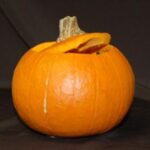Rubrics: Objective Assessment or Just Another Subjective Way to Assess Students
If you are a school teacher anywhere in the US, you have undoubtedly been introduced to rubrics. Indeed they have been promoted as the best thing since sliced bread. But all bread is not created equal. A thick crusty slice of homemade bread toasted to perfection with melted butter is quite different from a thin sliver of pumpkin bread spread with cream cheese. If I were to evaluate them by the same rubric, I could skew the results of the quality of these two very distinct kinds of breads.
Why then, do we think we can use the same rubric to evaluate the learning of two very different students? That is exactly how rubrics are designed. One rubric fits all in the classroom. But is that fair to all students?
Objectivity
From the perspective of measuring academic achievement, rubrics may well serve the purpose. If a rubric is created in such a way that it is actually objective, this may be easily done for subjects that are concrete, such as math or science. When it comes to writing or other language arts pursuits, and assessing by a rubric the waters begin to get murky.
How exactly does one assess the difference between sophisticated language and effective language? How do you distinguish between meets all requirements and goes beyond the requirements. These terms, I believe, allow the reader great latitude in assessing student work.
Subjectivity
When Johnny does a very through and accurate job with his research paper, has he met the requirements or exceeded them? When Betty deliberately uses simplistic language to create mood and emphasis in her poetry is she using sophisticated language? She is obviously a skilled writer as evidenced by her use of language to create mood, but has she exceeded the standard? It seems no one knows for sure. Ask ten teachers and you are likely to get a pretty even balance.
Rubrics are subjective and can provide results that are not reflective of what your student actually knows or accomplishes. We have all had the experience of grading two pieces of student work by the same rubric and seeing one piece rise to the top while is really demonstrates mediocre work, and another fall behind, even though the student has demonstrated superior work.
The Flaw
The flaw, of course, is in the rubric used. Sometimes we have the ability to change rubrics to better serve the needs of our students and better reflect what they can and can not do. Other times, rubrics, such as those use for state assessments,are not within our power to change.
This is why I can adamantly say, “I Hate Rubrics!”
Visual Representation
But then, I love rubrics too. They are a visual representation of exactly what you expect form your students. Students know what is expected of them and can work towards meeting all the stated goals. Parents have a means to assess their own child’s work and assist them in meeting all the requirements. Everything is up front with no surprises.
Rubrics, it seems, can provide valuable information that can assist the teacher in providing activities to build skills in the areas that need strengthening. Rubrics provide structure and state the expectations for students. For these reasons, I will continue to use rubrics in my assessments.
RubiStar
If you too are frustrated with the often subjective rubrics that accompany your lessons, RubisStar provides a nice template for rubrics. You can choose to use one of their ready made rubrics designed for specific projects, or you can use their format and template to create your own rubric online and print it for your use.



